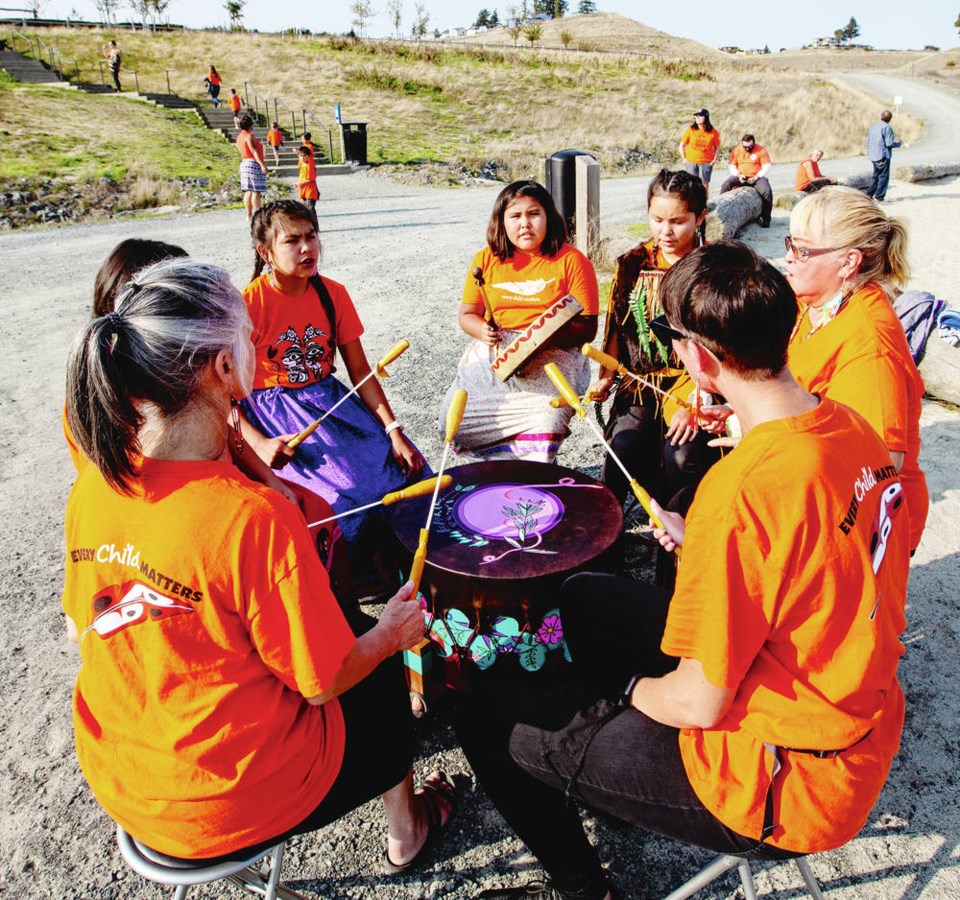Sept. 30 was ŌĆ£Orange Shirt Day.ŌĆØ By wearing an orange shirt, we recognize the long and continuing road of reconciliation with First Nation Peoples.
I believe that now is a fine time to enhance our knowledge, respect and understanding of the Indigenous population ŌĆö it is truly incumbent upon us to learn in more detail than what is on the nightly news between The Bachelorette and Dancing With the Stars.
Every day should be Orange Shirt Day.
First Nations culture, both spiritual and intellectual, can be daunting. With an abundance of issues and information, itŌĆÖs difficult to know where to begin.
Three books might help ŌĆö one takes only three minutes to read and often brings me to tears with its deeply touching message.
The book looks like a childrenŌĆÖs book, but itŌĆÖs for all of us. It tells a simple but powerful tale based on a South American story titled The Little Hummingbird, adapted with illustrations by the Haida artist Michael Nicoll Yahgulanaas and environmentalist Wangari Maathai (Greystone Books, Vancouver).
There are certain childrenŌĆÖs books that should be part of our adult libraries. Who could ever forget the heart-wrenching ending in Winnie the Pooh, when Christopher Robin takes Pooh, alone, to a lovely wood and explains that he has to go off to school, and Pooh sits there listening, sitting on a log, slightly bewildered, not really understanding the depth and sadness of the end of childhood ŌĆö I weep just thinking about it, as I do every time I read The Little Hummingbird.
ChildrenŌĆÖs books shouldnŌĆÖt be ignored due to their simplicity; they introduce us to very complex issues. Here is another, from a series of Indigenous legends, told and illustrated in a lovely simple manner: How the Robin Got its Red Breast ŌĆō A Legend of the Sechelt People, illustrated by Charlie Craigan (Nightwood Editions, 1993).
These endearing traditional tales are still in print and easily available and will surely instill a love of nature, the environment and First Nations culture in all ages.
My third suggestion to help you become familiar with both historic and contemporary First Nations culture and issues is Speaking Our Truth ŌĆō A Journey of Reconciliation by Monique Gray Smith (Orca Book Publishers, 2017). This is a wonderfully informative and beautifully designed book, full of facts, photographs, definitions, anecdotes and insightful questions we must all ask ourselves if we choose to be better people.
The book demystifies past and present governmental treaties and policies, such as the Truth and Reconciliation Commission, the 1876 Indian Act and the Sixties Scoop, and doesnŌĆÖt shy away from mentioning sterilization and the horrid, appalling use of electrical shock as punishment in residential schools.
Additionally, it includes an informative array of First Nations spiritual practices and beliefs, such as the relevance of the seven stars in the Big Dipper, and the symbolic three strands of the sweetgrass braid.
But what really stands out for me in SmithŌĆÖs book is her lack of resentment. She simply explains First Nations issues in a serene but truthful manner ŌĆö she doesnŌĆÖt hit us over the head with guilt or shame. Instead, her gentle approach provides us with a deeper understanding of her ancestorsŌĆÖ lives that enlightens our perspectives.
Orange Shirt Day is more than one day. It is all around us, every day, and its message is part of our own lives, significantly interwoven within our communities.
Here are three COVID-friendly activities that will also deepen our understanding of Indigenous culture.
ŌĆó Visit the Royal sa╣·╝╩┤½├Į MuseumŌĆÖs low-lit, tranquil First Peoples Gallery for the highly informative interactive ŌĆ£Living Languages,ŌĆØ exhibit, with 34 different Indigenous greetings. Slow down and learn a new way to say ŌĆ£hello and welcome.ŌĆØ
ŌĆó Take a walk around town and see if you can find the seven Signs of Lekwungen indicated by the Spindle Whorl sculptures (hereŌĆÖs a hint: they are close to water). The Spindle Whorl was a Coast Salish weaving tool recreated as a public art sculpture by artist Butch Dick. They are in seven Victoria locations, areas with significant relevance to the Coast Salish peopleŌĆÖs cultural past ŌĆö for example, a vital clam bed that served as a food source. (Google ŌĆ£Signs of LekwungenŌĆØ for the locations and more information).
ŌĆó Check out the new art show by the Northwest Territories Aboriginal/Black painter Robert Burke at the Winchester Galleries in Oak Bay. His colourful and symbolic exhibit Dialogues of a Solitary Voice speaks to his life and reconciliation, and runs throughout October.



